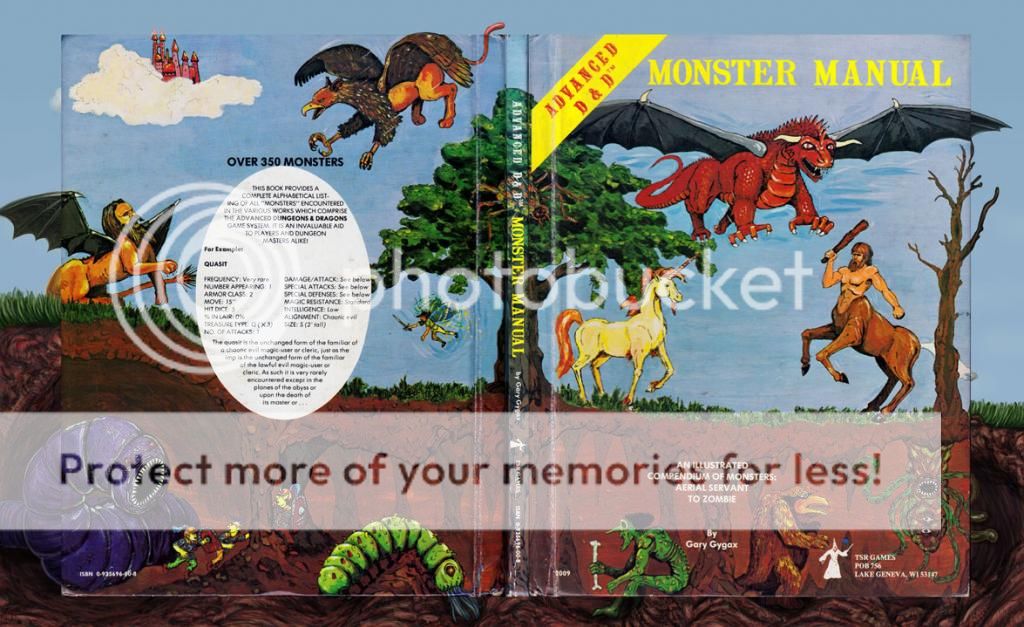Yes, it's a mess organizationally; except for the Monster Manual, there seems to be no logical layout of the contents of the system. Yes, said Monster Manual gives almost no information aside from the combat capabilities of the creatures contained therein. Yes, having the movement rates and distances listed in inches is confusing (although not quite as confusing as 2e's "movement rates"; why the hell couldn't they just use the feet per round/feet per turn numbers that they used in non-A D&D?). Yes, a lot of the limitations on classes and races make little sense (although there are actually fewer restrictions than in 2e; almost every race has unlimited progression as something, usually as a thief). Yes, rolling on a table for every attack sucks eggs.
But if I had grown up with this as the dominant system, and had a similar group of like-minded friends to the ones I had in high school, I'd wager we would have had just as many adventures with this set of rules as we did with the Pathfinder Beginner Box.
When comparing the two, I can see why some people prefer this over 2nd Edition. The removal of assassins and half-orcs (for moral reasons) as well as monks (for setting reasons) is annoying, sure, but there's no reason why someone who owned both sets of rules couldn't just stick them back in. Plus, the Greyhawk book The Scarlet Brotherhood added essentially unchanged versions of the two excised classes, updated for 2e rules, but considering it came out in 1999 I'm not surprised few remember it. The removal of psionics from core is also kind of disappointing, but the psionics system from the splatbook (and the revised version from Player's Option: Skills and Powers) is much clearer in its wording.
Beyond these concerns, the 1st Edition Dungeon Masters Guide (sic) is freaking beefy. Admittedly, some of the information therein might be more appropriately placed in the Players Handbook (again, sic), but there are so many things here that were outright omitted from 2e. The endgame is only very briefly detailed in the 2e DMG, and each DM is expected to make up their own random encounter tables for each environment. In contrast, the 1e DMG gives tables for everything... including the infamous "harlot subtable". (If you haven't read this part yet - it's in Appendix C under "City/Town Encounters" - please do so. It is even more hilarious than you think. I'll wait.)
I might be getting the premium reprint of the 1e DMG as a holiday present. Not necessarily to use, you see, but because I want to read it cover to cover someday, and I'd like my copy to be as beautiful as possible.
Anyway, to answer the question in the title: if I could find a group of players with even more time on their hands than me, willing to rise to the challenge of playing this system, I'd be up for it. But with one exception: I would use the Monstrous Manual from 2nd Edition, instead of the 1e counterpart. It's a better book, hands down; not only is the art improved (a minor advantage for me, to be fair), but the listing of each monster's culture and society, and the additional types of dragons included, beat the hell out of the original.
 |
| Also, I doubt my players would cower in fear if Ashardalon looked like he just shat himself after smoking five joints. |
No comments:
Post a Comment